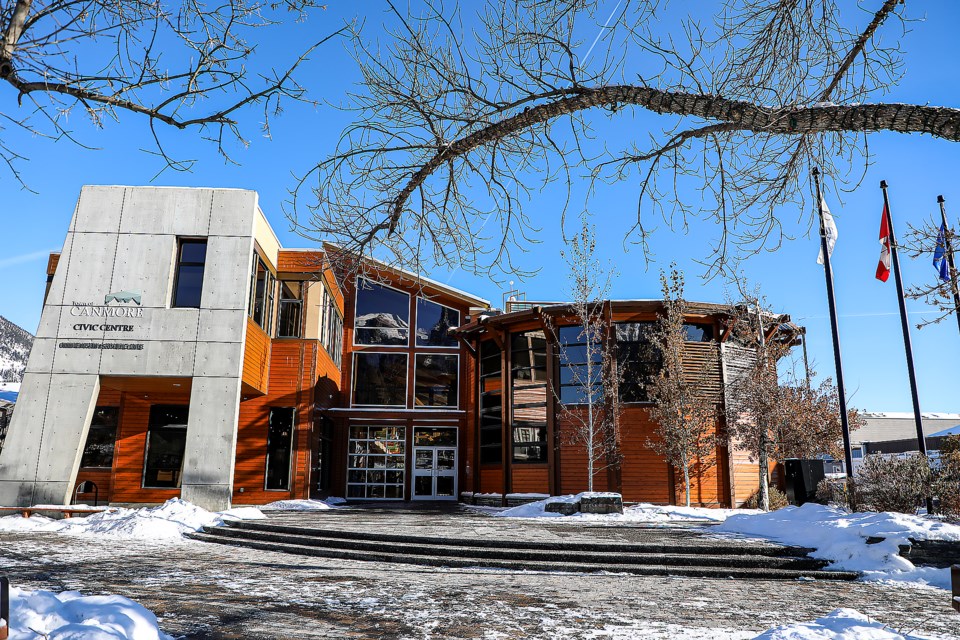CANMORE – More than 7,000 photo radar tickets were doled out in Canmore in 2022 – the eighth highest since 2008 – but statistics show fewer than two per cent of drivers were breaking speed limits.
The annual report provided to Canmore council shows photo radar was used for a total of 1,358 hours in 2022 – in playgrounds and school zones for 40 per cent of the time and in other areas for the remaining 60 per cent. There were just under 510,000 vehicles captured on photo radar, with 10,535 breaking speed laws and 7,039 tickets handed out.
“Encouraging safe speeds is an important part of creating safer streets and livable communities,” said Caitlin Miller, the Town’s manager of protective services. “Slowing down gives everyone time to react to the unexpected, avoid collisions and lower the severity of collision-related injuries.”
Most of the tickets – 73 per cent – were given to non-residents, with the net revenue going to help fund 1.5 Canmore RCMP positions, equipment for peace officers, active transportation projects for traffic calming in the area of Hawks Bend, Glacier Drive at Elk Run Boulevard and near Lions Parks, and 44 new driver rebates of $250 each.
The net revenue for photo radar in 2022 was $256,000 while gross revenue was $506,000.
In 2022, photo radar was cancelled along Palliser Trail, Bridge Road and 8th Avenue at Industrial Place because those locations did not meet criteria set out by the province. There are 33 total approved areas for photo radar in Canmore.
Between 2019-22, there were 35 collisions in photo radar-approved areas, including five in 2022 that represented the fewest in a year. The report noted 11 collisions have been recorded along Bow Valley Trail in the areas of Ray McBride Street and 10 Street along Benchlands Trail near Cougar Creek Drive.
“Collision data continues to inform traffic calming and road design capital projects. Palliser Trail is an example of a zone that is now archived because traffic calming and road design have made it difficult for drivers to speed and automated traffic enforcement is no longer required,” stated the report.
Andy Esarte, the Town’s manager of engineering, said enforcement has been shown to help lower driver speeds, but Town staff have been designing infrastructure to complement enforcement to reduce vehicle speeds.
Among the two hot spots were Bow Valley Trail and Benchlands Trail, two of the main arterial roads in Canmore.
“Enforcement, in general, does help lowering speeds on roadways and tends to be used in places we have traditional design and the roadways are driven in ways that people feel comfortable,” said Esarte. “To complement enforcement or remove the need for enforcement really requires change in nature of the roadway and we’re seeing that need take place on Bow Valley Trail incrementally over time.”
Coun. Wade Graham, who has long advocated against photo radar, said an issue he has had with the program is that roads are designed in a specific way that encourages faster driving speeds.
“The places where we’ve had success have been the places where we’ve engineered solutions,” he said.
Mayor Sean Krausert said he had the same thought when he first became a councillor, wondering how photo radar helps relate to safer driving, and highlighted the money from ticketing that comes with drivers breaking speed laws helps fund traffic calming initiatives.
“All of these things increase the safety in our community and if someone wants to be part of the donation system, they can continue to drive recklessly,” he said. “It is a choice. We see the results of that safety not necessarily in the tickets and whether that act caused it to reduce it. … There’s so much more we have to look at.”
Meanwhile, the municipal enforcement department began 1,234 investigations overall last year following 1,018 in 2021. Nearly half the investigations in 2022 were related to parking, traffic and road use, while domestic animal control at 167 and wildlife attractants were the next most common.
A total of 870 tickets and 592 warnings were handed out, with roughly two-thirds being traffic and road use bylaw related.




